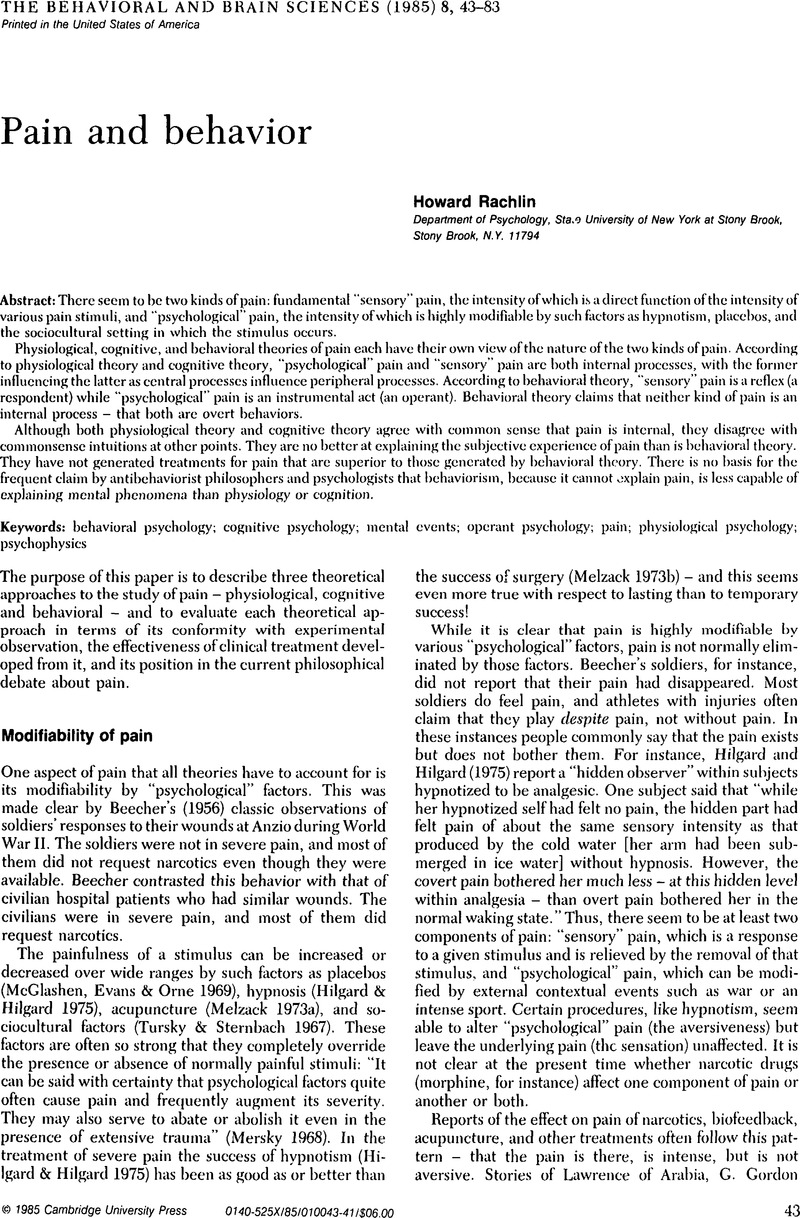Crossref Citations
This article has been cited by the following publications. This list is generated based on data provided by Crossref.
Shimp, Charles P.
1989.
CONTEMPORARY BEHAVIORISM VERSUS THE OLD BEHAVIORAL STRAW MAN IN GARDNER'S THE MIND'S NEW SCIENCE: A HISTORY OF THE COGNITIVE REVOLUTION1.
Journal of the Experimental Analysis of Behavior,
Vol. 51,
Issue. 1,
p.
163.



